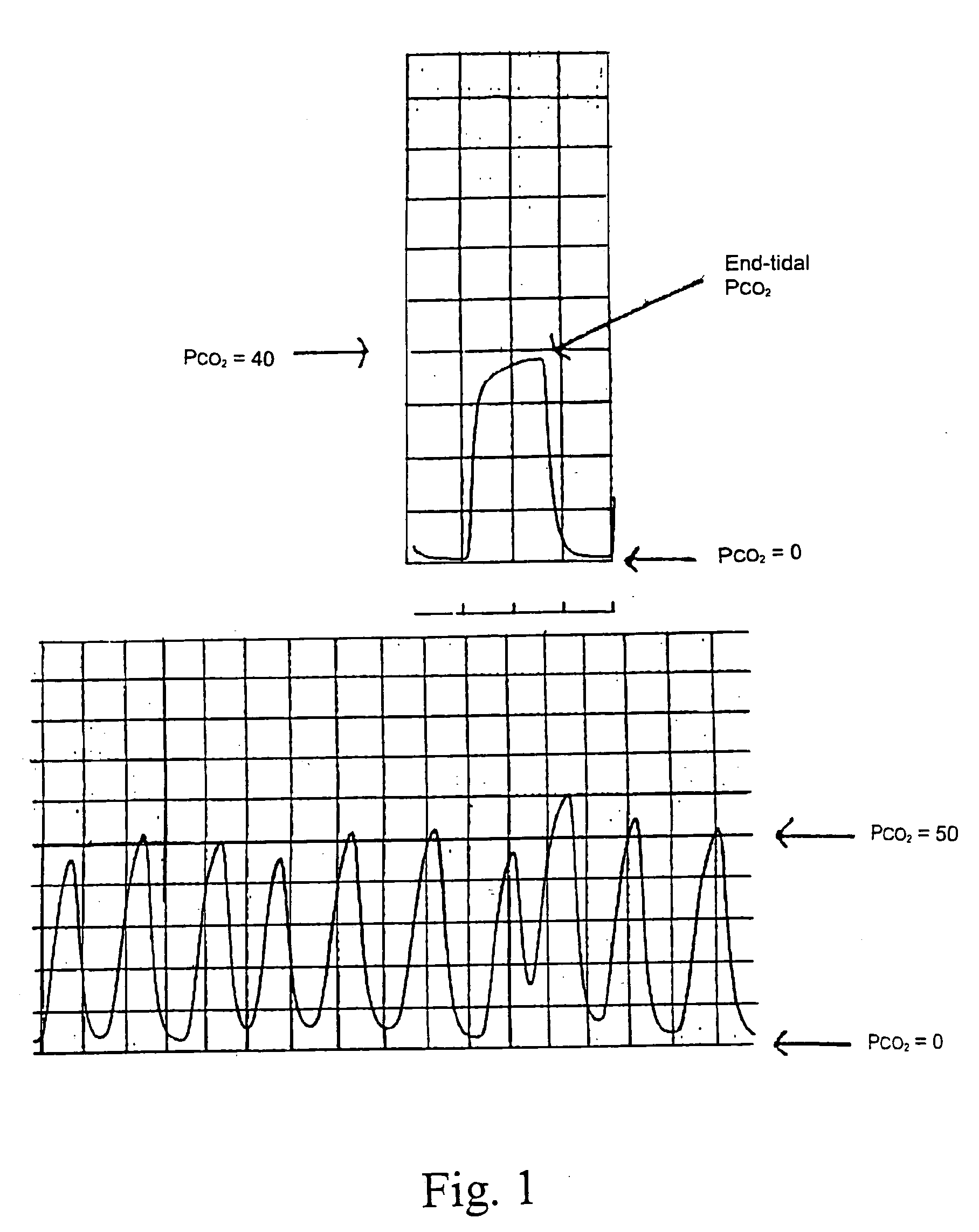Detection and measurement of hematological parameters characterizing cellular blood components
- Summary
- Abstract
- Description
- Claims
- Application Information
AI Technical Summary
Benefits of technology
Problems solved by technology
Method used
Image
Examples
example 1
Red Cell (Erythrocyte) Determinations and Measurements
[0156] To determine blood hemoglobin concentration by vapor analysis (such as analysis of exhaled breath or headspace using any of the sensor technology described herein such as aptamer biosensors and amplifying fluorescent polymer sensors), the following equation is applied:
Hbv=fa(avhb)+fb(bvhb)+ . . .
Hbv is the hemoglobin concentration in the circulating blood determined by vapor analysis. The vapor concentrations of volatile markers associated with hemoglobin are represented by avhb, bvhb, etc. The detection and quantification of a specific volatile marker by a specific sensor is characterized by a unique function, f. A simple example is the linear relationship of Hbv=k·avhb, where the hemoglobin concentration determined by vapor analysis is directly proportional by the constant k to the concentration of a volatile marker associated with hemoglobin.
[0157] Similarly, the concentration of red blood cells (RBC) can be determ...
example 2
Platelet (Thrombocyte) Determinations
[0175] The systems and methods of the subject invention can also perform any one or combination of the following: [0176] 1) determine the platelet concentration in the blood by sample analysis; [0177] 2) determine the megakaryocyte concentration in the blood by sample analysis; [0178] 3) determine platelet activation by sample analysis; [0179] 4) determine platelet maturation by sample analysis; [0180] 5) determine platelet production, consumption, and turnover by sample analysis; [0181] 6) diagnose intrinsic thrombocytopathies (e.g., Glanzmann's thrombasthenia) or acquired thrombocytopathies by sample analysis; [0182] 7) determine the degree of glycoprotein IIb / IIIa receptor blockade and the degree of other platelet glycoprotein receptor occupancy by sample analysis;
example 3
White Blood Cell (Leukocyte) Determinations
[0183] The subject invention provides systems and methods for performing any one or combination of the following: [0184] 1) determine the blood concentration of lymphocytes, polymorphonuclear neutrophils, basophils, eosinophils and monocytes by sample analysis (i.e., the quantity of the particular cell that is circulating per unit volume of blood); [0185] 2) determine the ratio of the different “white blood cell” types (lymphocytes, neutrophils, basophils, eosinophils and monocytes), commonly referred to as a differential count, using sample analysis; [0186] 3) determine the so-called “left shift” of the polymorphonuclear neutrophil maturation series of Schilling to less mature forms such as early segmented and band neutrophils using sample analysis; [0187] 4) determine lymphocyte, polymorphonuclear neutrophil, basophil, eosinophil, and monocyte activity, competence, or capability by sample analysis; [0188] 5) diagnose lymphocyte, polymorp...
PUM
| Property | Measurement | Unit |
|---|---|---|
| Temperature | aaaaa | aaaaa |
| Temperature | aaaaa | aaaaa |
| Concentration | aaaaa | aaaaa |
Abstract
Description
Claims
Application Information
 Login to View More
Login to View More - R&D
- Intellectual Property
- Life Sciences
- Materials
- Tech Scout
- Unparalleled Data Quality
- Higher Quality Content
- 60% Fewer Hallucinations
Browse by: Latest US Patents, China's latest patents, Technical Efficacy Thesaurus, Application Domain, Technology Topic, Popular Technical Reports.
© 2025 PatSnap. All rights reserved.Legal|Privacy policy|Modern Slavery Act Transparency Statement|Sitemap|About US| Contact US: help@patsnap.com


